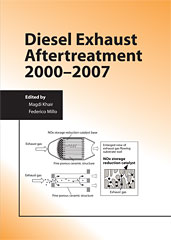Technical Paper
The DAAAC Protocol: A Procedure for Developing Accelerated Aging Cycles for Diesel Aftertreatment
2022-08-30
2022-01-1017
Accelerated aging of automotive gasoline emissions catalysts has been performed on bench engines for decades. The EPA regulations include an accelerated aging cycle called the Standard Bench Cycle (SBC) that is modeled on the RAT-A cycle developed by GM Corp. and published in 1988. However, this cycle cannot be used for diesel aftertreatment components because it is based on stoichiometric operation, whereas diesel engines typically operate under excess air (lean) conditions. The need for accelerated aging cycles for diesel emissions systems can be illustrated by considering that the full useful life (FUL) requirement in the United States for an on-highway truck is 435,000 miles, and an off-road application may be 8,000 hours. With the recent CARB Omibus legislation, the durability duration will be increasing for on-road applications by as much as 80 percent in the next decade.


